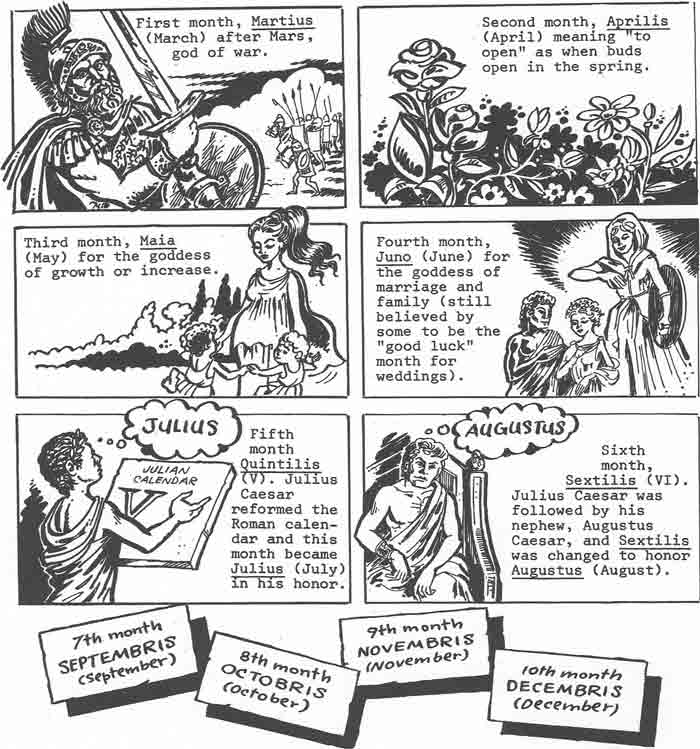A calendar is the proof that our days are numbered! It is also a system that plans its work a whole year ahead and never fails to finish on time.
Colleen's niece learned to use a calender for her paper making course. She made her aunt a wonderful calendar on which she charted the chores required during the harvest season including getting out the colander for straining the cooked tomatoes while she was making sauce.


From year one, an assumed date of the birth of Jesus, dates are calculated backwards (B.C., "before Christ" or B.C.E., "before common era") and forwards (A.D., Latin anno Domini, "in the year of the Lord", or C.E. "common era").
For adjustments, since there are slightly fewer than six extra hours a year left over, they are added to February as a 29th day every fourth year (leap year), century years being excepted unless they are divisible by 400; for example, 1896 was a leap year; 1900 was not.
This is the calendar used in most of the world today.
